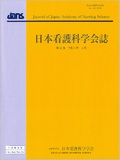Japanese
English
- 販売していません
- Abstract 文献概要
- 参考文献 Reference
要旨
目的:慢性疾患患者を対象としたピアサポート活動に従事する者の活動に対する負担感,満足感,サポート技術を測定する三つの尺度を開発し信頼性,妥当性を検討することを目的とした.
方法:国内でピアサポート活動を行う団体を通じピアサポーター140名に質問紙を配布し,作成した尺度,ピアサポート活動の状況,基本属性・健康状態への回答を得た.尺度の項目分析,確認的因子分析,基本属性,健康状態,ピアサポート活動の状況と尺度得点の関連性の分析を行った.
結果:64名から回答が得られた.満足感尺度の5項目で最大値に7割の回答が集中しており天井効果が疑われた.尺度は全て2因子構造で良好な適合度が得られた.負担感は活動頻度と,満足感は報酬の有無や不安と,サポート技術は心身の健康度と有意な関連がみられた.
結論:開発した尺度は構成概念妥当性と技術尺度の内容的妥当性に課題が残ったが,因子的妥当性,内的整合性は確認された.
Purpose: The objective of this study was to develop scales to measure sense of burden, satisfaction with activities, and the support skills of peer supporters who engage in peer support activities for people with chronic diseases, and to examine its reliability and validity.
Method: A questionnaire survey was conducted with 140 peer supporters in three peer support organizations in Japan. Participants were asked to respond to scales developed with reference to interviews and previous studies, as well as items related to demographic characteristics, disease characteristics, and characteristics related to peer support activities. The distributions of the responses to the scale items were examined. The factor structures were confirmed by confirmatory factor analysis. In addition, the relationship between demographic characteristics, disease characteristics, and characteristics related to peer support activities and scale scores were analyzed.
Results: Responses were obtained from 64 peer supporters of those with chronic diseases. In the five items of the satisfaction scale, the ceiling effect was suspected because 70% of the responses were concentrated on “agree,” which was the largest value, A good fit was obtained for the two-factor structure of the support skills, satisfaction, and burden scales. The burden was significantly related to frequency of activities, satisfaction to availability of rewards and anxiety, and support skills to physical and mental health.
Conclusion: Although the developed scale still had issues with construct validity and content validity of the technology scale, its factorial validity and internal consistency were confirmed.
Copyright © 2021, Japan Academy of Nursing Science. All rights reserved.


